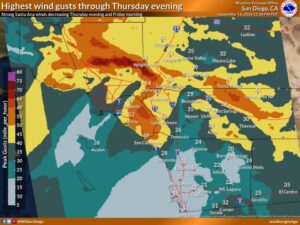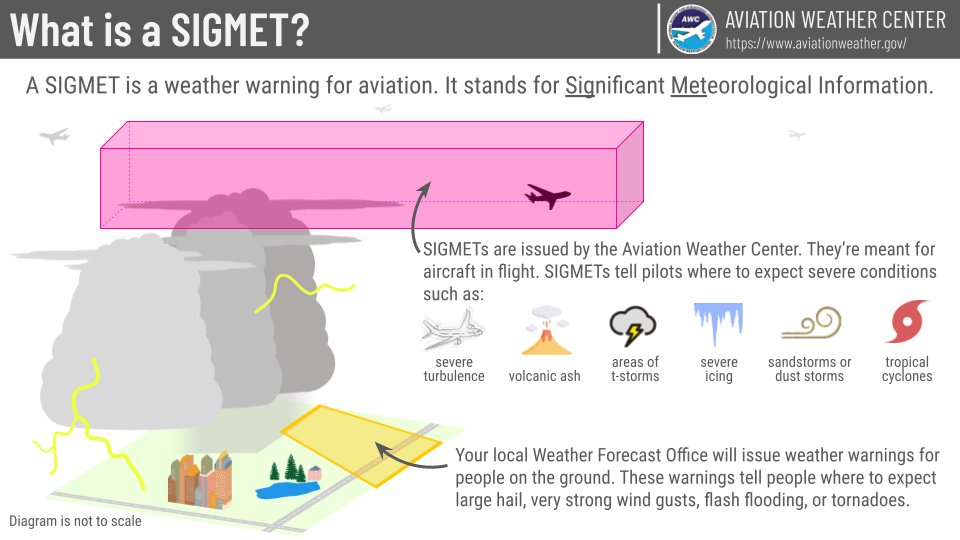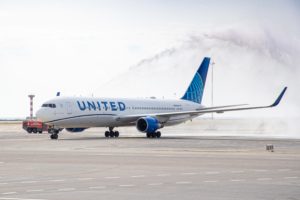
Alerts for severe turbulence have been issued by the National Weather Service’s Aviation Weather Center for large parts of California today. San Francisco’s SFO and OAK airports, Los Angeles area airports like LAX, SNA, BUR, ONT, LGB, and SBD, and San Diego’s SAN airports and the airspace above them are impacted by today’s rough air.

There are two SIGMETs in effect warning those taking to the sky of the severe conditions. The first for much of central California is in effect due to severe turbulence between 28,000 and 38,000 feet due to wind sheer associated with the jetstream and mountain wave activity. The second, in effect for interior and southern California, is in effect due to severe turbulence below 15,000 feet due to strong low level winds.
The National Weather Service for the Los Angeles and Oxnard area have issued High Wind Warnings for portions of southwest California today. “Winds this strong may down trees and power lines, causing property damage or power outages,” the Los Angeles National Weather Service office warned, adding, “Cross winds can make driving difficult, especially for drivers of high profile vehicles and vehicles towing trailers.”

SIGMET ROMEO 3 has been issued through to 2300Z while SIGMET VICTOR 2 is in effect through 2332Z.
In addition to making a mess of the skies above, the strong winds are also impacting conditions on the ground. A strong Santa Ana wind event across the Los Angeles and Ventura Counties continues today, gusts to around 50 mph in many areas except the Los Angeles coastal plain and as high as 75 mph in the mountains. According to the Los Angeles National Weather Service office, the SCE Magic Mountain truck trail sensor in the San Gabriel Mountains hit 86 mph earlier this morning. The wind has also kicked up some dust in the Antelope Valley where it dropped visibility to about 2 miles in area earlier today.

Wind shear is a difference in wind speed and/or direction over a very short distance in the atmosphere. Airline pilots generally regard significant wind shear to be a horizontal change in airspeed of 30 knots (15 m/s or 34 mph) for light aircraft and 45 knots (23 m/s or 51 mph) for traditional airliners flying at flight altitude.
Flying through turbulence can be dangerous, with injuries encountered on U.S. airline flights over the last several months.
In February 2023, a Newark-Tampa flight operated by United Airlines encountered severe turbulence. When flight 600 finally landed in Tampa, it was met by paramedics that treated passengers and crew at the scene. Ultimately, 1 flight attendant and 2 passengers needed hospitalization after being examined at the airport for injuries sustained during the rough flight.
During the winter of 2022, a United Airlines 767 jet encountered severe turbulence on its flight to Houston, Texas. Due to that encounter with rough air, 3 crew members and 2 passengers had to be rushed to the hospital for care upon landing.

The day before the Houston incident, Hawaiian Airlines Flight 35 flew through severe turbulence before landing at Honolulu International Airport after originating in Phoenix, Arizona. A Mass Casualty Emergency Event was declared, with dozens of passengers needing care for injuries sustained in the violent ride. Officials with Honolulu Emergency Medical Services and American Medical Response say the flight encountered the extreme turbulence about 30 minutes prior to landing; they treated 36 patients at the airport. 20 patients, ranging from a 14-month old toddler to older adults, were transported to hospitals near the airport, some with serious injuries.
Known as a SIGMET, short for Significant Meteorological Information, the severe weather advisory issued by the AWC contains weather-related information concerning the safety of all aircraft passing through a specific zone. Sometimes AIRMETs are issued too; an AIRMET consists of turbulence, visibility, and icing-related warnings that are less severe than those in a SIGMET.